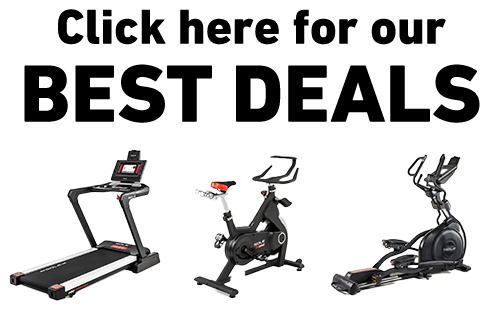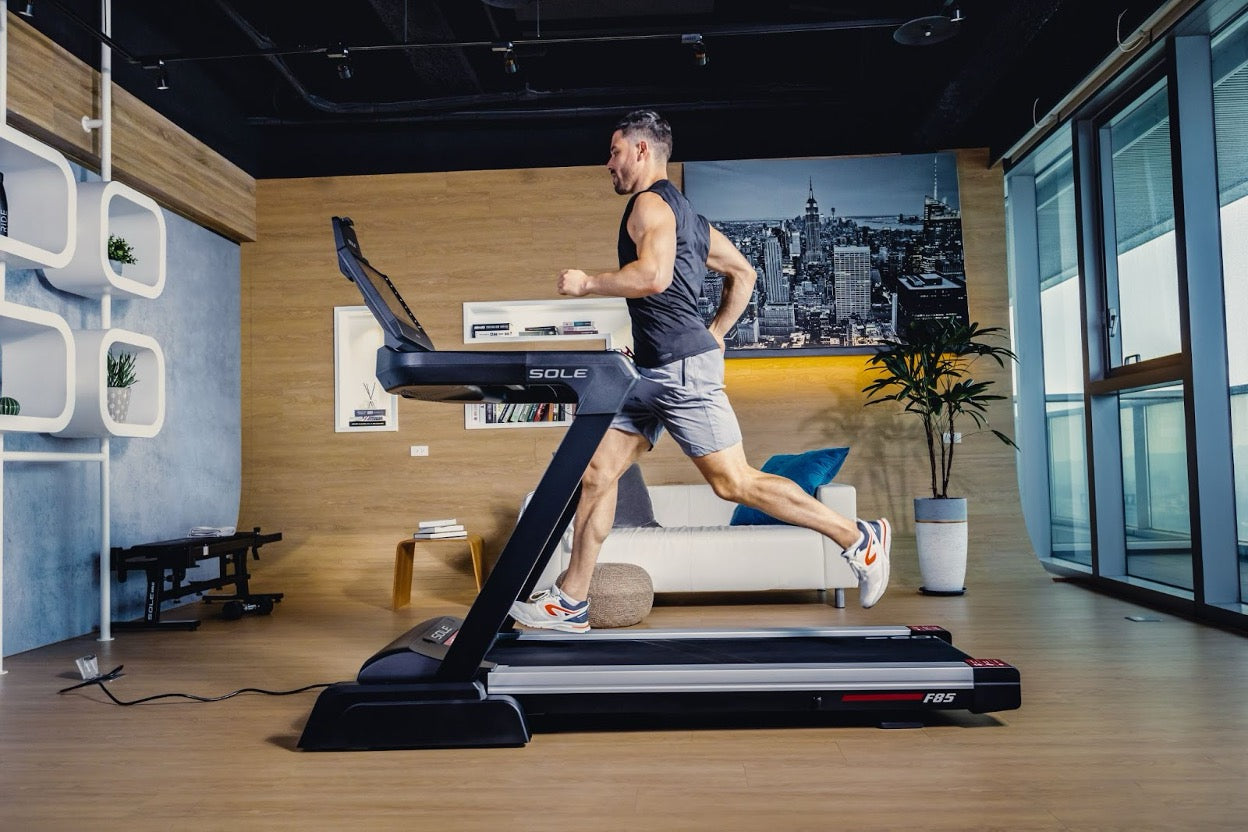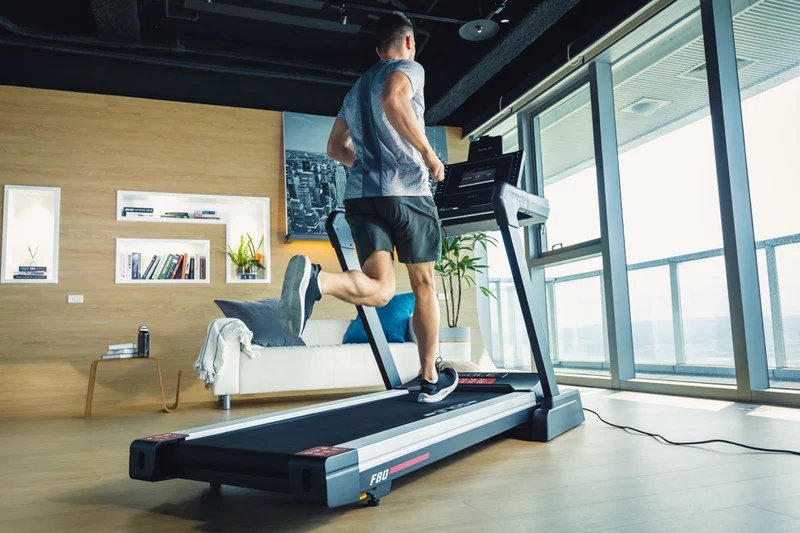Key Takeaways
- Walking at the right pace, typically 3–4 mph, maximizes calorie burn and keeps your heart rate in the fat-burning zone while remaining sustainable.
- Beginners should start at 2–3 mph to build endurance safely, gradually increasing speed or incline to avoid injury.
- Interval training and incline walking significantly boost calorie burn and engage more muscles, making workouts more effective.
- Consistency, arm movement, and variety in treadmill sessions help prevent plateaus and improve overall fitness results.
- SOLE treadmills offer commercial-grade durability, adjustable incline, Bluetooth connectivity, and free SOLE+ workouts, providing a smart, safe, and effective home fitness solution.
Why Walking Speed Matters and Finding Your Ideal Pace
The speed at which you walk on a treadmill directly impacts your heart rate, calorie burn, and overall workout effectiveness. Walking too slowly may not challenge your cardiovascular system enough to burn significant calories, while walking too fast can turn your session into a run rather than a brisk walk. To get the best results, it’s important to find a pace that feels challenging but sustainable.
Your ideal speed depends on your fitness level. Beginners can start at a gentler pace, while more experienced walkers can push a little harder. For most people, the comfortable “sweet spot” falls between 3–4 mph (4.8–6.4 km/h), fast enough to break a sweat but still easy enough to maintain proper form and hold a conversation.
|
Award-Winning Commercial-Grade Treadmills for Your Home
Why Choose SOLE: ✓ Commercial-grade steel frames with up to 4.0 HP motors 30-Day Money-Back Guarantee: Love it or return it, no questions asked. |
The Fat-Burning Zone Explained
To maximize fat loss, aim to keep your heart rate within 60–70% of your maximum heart rate (MHR). This range, known as the fat-burning zone, allows your body to efficiently use stored fat as fuel while still burning calories from other sources.
You can estimate your MHR using a simple formula:
MHR = 220 − age
For example, a 30-year-old would have a maximum heart rate of 190 bpm. Staying in the fat-burning zone means keeping your heart rate between 114–133 bpm.
Working in this zone doesn’t mean you have to push yourself to exhaustion, it’s about maintaining a steady, challenging pace that keeps your heart rate increased.
Longer walks at moderate speed are easier on joints but still effective.
Beginner-Friendly Treadmill Speeds
If you’re new to treadmill walking, start at 2–3 mph (3.2–4.8 km/h). This pace is gentle on joints, builds endurance, and helps your body adapt to regular exercise. Focus on maintaining proper posture and consistent steps before increasing speed.
How to Progress Safely
Gradually increase your speed by 0.1–0.2 mph every 1–2 weeks. This approach reduces the risk of injury while steadily improving endurance and calorie burn.
Moderate Intensity Walking Speeds
For most people, 3–4 mph is the ideal pace for weight loss. At this speed, a 155-pound person can burn approximately 133–175 calories in 30 minutes. Walking at a moderate pace increases your heart rate into the fat-burning zone while being sustainable for longer sessions.
Signs You’re Walking at the Right Pace
You should feel warm and slightly breathless but still able to converse comfortably. If you’re gasping for air, slow down; if you feel no exertion, pick up the pace.
Advanced Walking Techniques for Maximum Calorie Burn
Walking faster than 4 mph increases calorie burn and cardiovascular benefits. Power walking strengthens your legs, glutes, and core while enhancing endurance.
Interval Training Speeds
Mix periods of brisk walking with slower recovery walks. For instance, alternate 2 minutes at 4 mph with 2 minutes at 3 mph for 20–30 minutes. Intervals boost calorie burn and make workouts more engaging.
Other Factors That Boost Weight Loss
While walking speed is important, several additional factors can help you burn more calories and achieve better results on the treadmill:
1. Incline Settings
Adding incline increases the intensity of your workout without requiring you to walk faster. Even a small incline engages more muscles in your legs and glutes, boosting calorie burn. For example, a study found that walking at just a 5–10% incline greatly raised metabolic cost, with muscle activation in the calves and quads being strong predictors of energy expenditure. This shows that incline walking is an efficient way to boost calorie burn without needing to walk faster.
Interval training keeps your treadmill sessions challenging and fun.
2. Arm Movement
Swinging your arms naturally or using light weights while walking activates your upper body, increases energy expenditure, and improves posture. This simple adjustment can make your walk more challenging and effective.
3. Workout Frequency and Duration
Consistency matters more than occasional intensity. Walking 4–5 times per week for at least 30 minutes per session helps your body adapt, improves cardiovascular health, and supports long-term weight loss. Gradually increasing duration or incorporating intervals enhances results.
4. Variety in Workouts
Mixing up your treadmill routine prevents plateaus and keeps workouts interesting. Try alternating between steady-paced walks, brisk intervals, and incline sessions to target different muscle groups and maintain motivation.
Creating Your Personal Treadmill Walking Plan
Finding the right treadmill routine doesn’t have to be complicated. With a clear plan, you can gradually increase intensity, stay motivated, and maximize calorie burn.
Finding Your Optimal Speed
Start at a pace that feels comfortable and manageable. Pay attention to your heart rate and gradually increase speed or incline to stay within the fat-burning zone. The goal is a pace that challenges you without causing strain or poor form.
Weekly Speed Progression
- Week 1: 2–3 mph, 20–30 minutes per session. Focus on building consistency and maintaining proper posture.
- Week 2–3: 3 mph, 25–35 minutes. Gradually increase duration and start experimenting with slight incline adjustments.
- Week 4+: 3–4 mph with intervals or incline sessions. Introduce brisk walking or short bursts of faster speed to increase calorie burn and challenge your cardiovascular system.
Balancing Speed and Duration
Longer, moderate-paced walks are gentle on the joints and help build endurance. Shorter, faster sessions burn more calories in less time. Mixing both types of workouts throughout the week provides balanced results and keeps your routine engaging.
Achieve More Every Step with SOLE Treadmills
If you’re looking for a treadmill that combines durability, performance, and smart features, SOLE treadmills are designed to deliver a premium home workout experience.
SOLE treadmills make it easy to adjust speed and incline for every fitness level.
Space-Saving & Smart Design
SOLE treadmills are designed with convenience in mind. Their Easy Assist folding technology allows compact storage, while high weight capacities (up to 400 lbs) ensure stability for all users. Built-in Bluetooth connectivity allows you to track progress, stream workouts, and enjoy guided training without extra subscriptions.
Variety to Fit Your Goals
- F6X Series (F63, F65): Perfect for beginners or home users, with reliable durability, customizable programs, and backlit LCD consoles.
- F8X Series (F80, F85, F89): High-end models with interactive touchscreens, advanced incline options, and superior technology for immersive workouts.
- Non-Folding Series (ST90, TT8): Innovative designs with slat belt running surfaces, incline and decline capabilities, and long-lasting construction for an advanced home or light commercial setup.
Built to Last
SOLE treadmills come with industry-leading warranties, including lifetime coverage on the frame and motor, plus extended warranties on parts and labor. This ensures peace of mind while you focus on reaching your fitness goals.
The SOLE+ Advantage
Every SOLE treadmill owner gains free access to the SOLE+ app, offering thousands of online, instructor-led workouts across cardio, strength, and flexibility categories. If you’re walking, power-walking, or incorporating intervals, SOLE treadmills provide the tools and support to make every session count.
Take the first step toward smarter, more effective workouts with SOLE. Your next walk starts here.
Frequently Asked Questions (FAQs)
What is the best starting speed?
For beginners, a starting speed of around 3 mph (4.8 km/h) is recommended. This pace is manageable and helps develop endurance without causing excessive fatigue. As you become more comfortable, you can gradually increase the speed.
How often should I increase my speed?
It's best to increase your speed gradually to avoid overexertion and injury. Aim to increase your speed by 0.1–0.2 mph every week or two, depending on your comfort level and progress.
Can walking at a slow pace still be effective?
Yes, walking at a slow pace can still be effective, especially for beginners or those with health conditions. Just maintain consistency and gradually increase the intensity as your fitness improves. Adding incline or increasing the duration of your walks can also enhance calorie burn.
Is it better to walk for a long time at a slow speed or a short time at a fast speed?
Both approaches can be effective, depending on your goals and fitness level. Walking for a longer time at a slow speed can help build endurance and is easier on the joints. On the other hand, walking for a shorter time at a fast speed or incorporating intervals can increase calorie burn and improve cardiovascular fitness.
Can treadmill workouts replace outdoor walking?
Absolutely. SOLE treadmills provide a controlled environment with adjustable speed and incline, making it easy to tailor your workout to your fitness level. Adding inclines or intervals on a SOLE treadmill can even make indoor walking more efficient than outdoor walking, all while protecting your joints and providing a consistent, safe surface.



Leave a comment
This site is protected by hCaptcha and the hCaptcha Privacy Policy and Terms of Service apply.